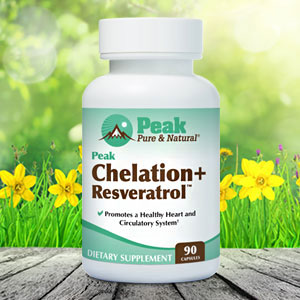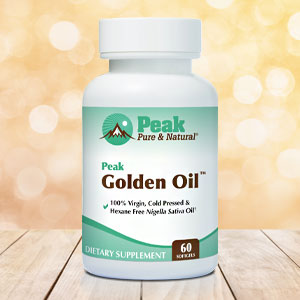My mom recently had an eye exam and was dismayed to learn that she was in the early stages of age-related macular degeneration (AMD), a leading cause of blindness in people over age 50.
She immediately followed the doctor’s instructions for diet and supplements, but she had one question to which the doctor couldn’t give a satisfying answer:
“Is there anything I could have done to prevent this?”
Right now, the short answer to that is no. AMD has no known cause, and while there are treatments to slow progression, there is no cure.
But scientists are looking to change that. They’re digging deeper into the mechanisms of the disease — and what they’re discovering is fascinating…
The key could be a molecule that maintains healthy cholesterol
An international team of researchers led by the Washington University School of Medicine in St. Louis (WashU Medicine) used human plasma samples and mouse models of AMD to explore a specific link with cardiovascular disease, both of which worsen with age.
The reason they chose to focus on that connection is that in AMD, doctors can see cholesterol-rich deposits under the retina during an eye exam, according to senior author Dr. Rajendra S. Apte, a professor at WashU Medicine.
While vision might still be normal in the early stages, the deposits increase inflammation and other damaging processes that lead to a gradual loss of central vision.
In recent years, investigators have discovered that a molecule called apolipoprotein M (ApoM) exhibits anti-inflammatory effects and plays a role in maintaining healthy cholesterol metabolism. Levels of ApoM tend to fall with age.
Dr. Apte and co-senior author Dr. Ali Javaheri, also a professor at WashU Medicine, aimed to investigate whether reduced levels of ApoM contribute to the dysfunctional cholesterol metabolism underlying multiple diseases of aging, including AMD and heart disease.
They demonstrated that patients with AMD have lower levels of ApoM in their blood compared to healthy patients. And past research by Javaheri showed patients with various forms of heart failure also had lower levels of ApoM.
This study revealed that ApoM is a key component in the “good cholesterol” pathways that clean up excess “bad” cholesterol — the kind that tends to drive inflammation — and clear it from the body through the liver.
This suggests that when ApoM levels are low, cells in the retina and heart muscle are unable to metabolize cholesterol deposits correctly and have difficulty clearing the accumulating lipids. When they build up, it leads to inflammation and cellular damage.
Effects of low ApoM could be reversible
To see if they could reverse the harmful effects of low ApoM, the researchers increased ApoM levels in mouse models of macular degeneration. The mice showed evidence of improved retinal health, improved function of light-sensing cells in the retina and reduced accumulation of cholesterol deposits.
In short, the results suggest increasing ApoM in the blood could fix problems in cholesterol processing that lead to cellular damage in the eyes and other organs.
“Our study points to a possible way to address a major unmet clinical need,” Apte says. “Current therapies that reduce the chance of further vision loss are limited to only the most advanced stages of macular degeneration and do not reverse the disease. Our findings suggest that developing treatments that increase ApoM levels could treat or even prevent the disease and therefore preserve people’s vision as they age.”
The findings also could have implications for raising ApoM in patients with heart failure.
You may be wondering if there’s any way we can support our own ApoM levels. There is some evidence that berberine, a naturally occurring compound found in certain plants, may increase ApoM levels to protect the gut-vascular barrier. Sources of berberine include European barberry, goldenseal, goldthread, Oregon grape, phellodendron and tree turmeric.
Berberine is available in supplement form, but be aware that it interacts with several medications. It’s important to check with your doctor first before using it.
Another study in mice showed that niacin increased ApoM gene and protein expression levels. This vitamin is present in foods such as yeast, milk, meat and cereals. Although you can take niacin supplements, you’re likely getting enough of the vitamin from your diet.
If you do take a niacin supplement, don’t take more than what is recommended, or you could end up causing another problem for your eyes — a rare toxic reaction called niacin-induced maculopathy.
Sources:
The molecule that might save your sight—and your heart — ScienceDaily
Apolipoprotein M attenuates age-related macular degeneration phenotypes via sphingosine-1-phosphate signaling and lysosomal lipid catabolism — Nature Communications
Berberine reduces gut-vascular barrier permeability via modulation of ApoM/S1P pathway in a model of polymicrobial sepsis — Life Sciences
Berberine – Uses, Side Effects, and More — WebMD
Niacin regulates apolipoprotein M expression via liver X receptor‑α — Molecular Medicine Report
Niacin — Mayo Clinic
Read full article here




